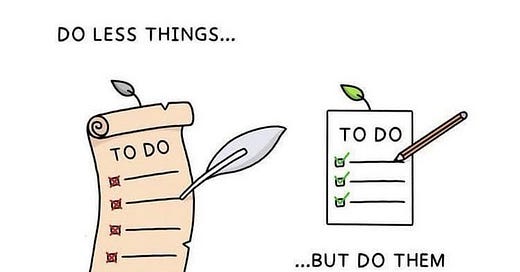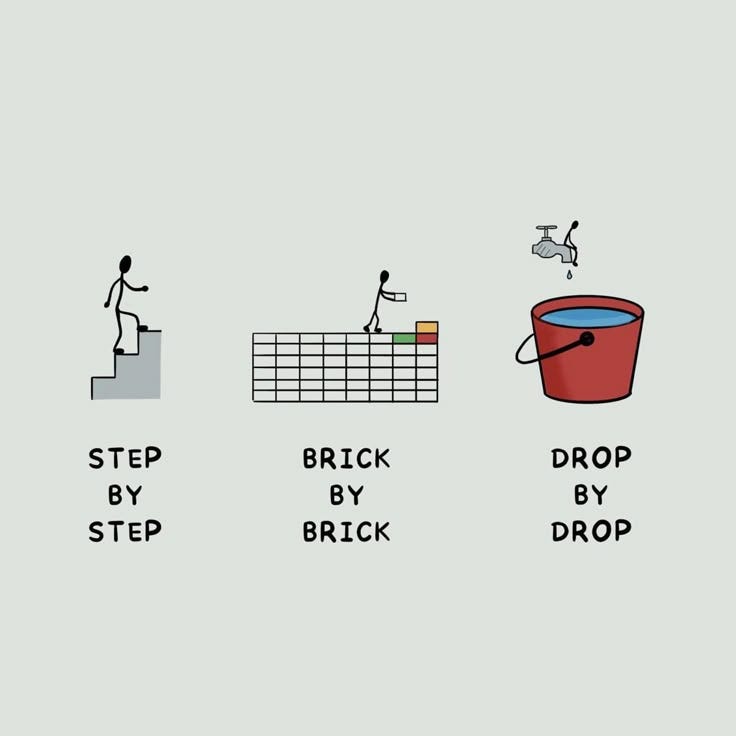ANOTHER DAY—ANOTHER STARTUP INSIGHT
Ever heard of the KISS principle?
KISS = Keep It Simple, Stupid
A startup is fundamentally a hypothesis:
“I believe there’s a problem, and I believe I can solve it.”
But, many founders fall into the trap of overcomplicating their product, operations, and fundraising.
The result?—Burnout, wasted money, and a startup that never takes off.
The best startups, however, follow the KISS (Keep It Simple, Stupid) principle, focusing on clarity, efficiency, and speed.
If you’re building a startup (or thinking about raising money), I have one piece of advice: Keep it simple, stupid!
Let’s break this down into two parts:
Building your startup—Why simplicity leads to faster execution, better products, and more successful businesses.
Raising funds—How to make fundraising easier (and avoid startup-killing mistakes).
Applying the KISS principle in building a startup
- SIMPLIFYING BUSINESS STRATEGY
Startups don’t fail because they lack features
They fail because they try to do too much, too soon.
The best startups keep their strategy focused and execute on the essentials first.
Here’s how:
1. Focus on core values and products
Before adding extra features or expanding into new markets, nail one thing first.
Examples:
Airbnb → Started by renting out air mattresses in their own apartment before expanding globally.
Instagram → Launched as a simple photo-sharing app before adding stories, reels, and filters.
Uber → Focused on a black car service in San Francisco before rolling out UberX and UberEats.
📌 Ask yourself:
✅ What is the ONE problem I’m solving?
✅ If I had to launch tomorrow, what’s the minimum version of my product (MVP)?
2. Market entry strategy
The easiest way to fail?—Trying to target everyone at once.
Instead, focus on one market, one customer segment, and one use case first.
Examples:
Facebook → Launched only for Harvard students before expanding to other colleges.
Amazon → Started by selling only books before adding electronics, clothing, and more.
Tinder → Focused on college students, creating organic buzz before expanding.
📌 What to do:
✅ Find your niche market and dominate it.
✅ Scale only after you gain traction.
3. Avoid feature creep
More features don’t always mean a better product.
Too many features = a confusing user experience.
Examples:
Snapchat → Kept its app simple with just disappearing messages before adding stories.
Spotify → Focused only on music streaming, avoiding unnecessary distractions.
Stripe → Launched as a simple API for payments, without trying to be a full banking service.
📌 What to do:
✅ Strip your product down to the essentials.
✅ Launch first, iterate later based on user feedback.
- SIMPLIFYING OPERATIONS
A complicated team structure slows down decision-making.
Instead, keep operations lean and efficient.
1. Keep your team lean
More people ≠ More progress.
A bloated team means:
More meetings.
Slower decisions.
Higher burn rate.
Startups that stayed intentionally small and won:
Basecamp → Built a $100M+ business with fewer than 60 employees.
WhatsApp → Had only 55 employees when it was acquired by Facebook for $19 billion in 2014.
Instagram → Just 13 employees when Facebook acquired it for $1 billion in 2012.
Startups don’t fail from having too few employees.
They fail from wasting resources on the wrong priorities.
Ask yourself:
“Is this hire essential right now?”
“Can I do this task with software instead of a full-time employee?”
“Will this decision help us get closer to product-market fit?”
📌 What to do:
✅ Hire only when absolutely necessary.
✅ Use no-code tools & automation before hiring full-time employees.
✅ Keep meetings short and decision-making fast.
By keeping your team small and operations simple, you can move faster and stay focused.
2. Divide projects into smaller tasks
Don’t overwhelming your team with huge, abstract goals.
Break them into small, actionable tasks.
Here are some hacks that work:
Asana, Trello, or Notion → Organizing work into smaller, trackable tasks.
Sprint planning → Short development cycles to iterate fast.
No-code & automation tools → Reducing manual work.
📌 What to do:
✅ Define clear, measurable milestones.
✅ Use tools to automate repetitive tasks.
3. Clear communication
Startups fail when team members don’t know what’s happening.
Keep communication simple and transparent.
📌 What to do:
✅ Short, daily check-ins → Quick stand-ups instead of long meetings.
✅ Async updates → Use tools like Slack, Notion, or Loom instead of unnecessary calls.
✅ One-page reports → Keep updates concise & actionable.
Ask yourself:
“Is this meeting necessary?”
”Can this update be shared in a 1-minute message instead?”
Applying the KISS principle in raising funds
- SIMPLIFYING THE PITCH
Raising money for your startup doesn’t have to be complicated as well.
The best founders keep it simple, clear, and efficient—because investors don’t invest in confusion.
1. Clear and concise messaging
Investors hear thousands of pitches
If they don’t get yours in 30 seconds, they’ll move on.
Investors—just like customers—need to grasp your idea in seconds.
Keep your pitch simple:
Avoid jargon → Investors aren’t impressed by buzzwords.
Focus on the problem & solution → What problem are you solving? Why does it matter?
Use a clear, one-liner → If your startup were a tweet, what would it say?
The best startups nail their pitch:
Uber → “Tap a button, get a ride.”
Airbnb → “Book rooms with locals, rather than hotels”
Notion → “One workspace. Every team.”
📌 What to do:
✅ Craft a one-liner that clearly explains what you do.
✅ Refine your pitch until a 10-year-old can understand it.
✅ Cut the fluff—investors care about clarity and traction, not complexity.
✅ Practice pitching to friends—if they’re confused, simplify.
2. Focus on key metrics
Instead of long explanations, show traction with numbers.
Investors want proof, not promises.
What to include:
Revenue growth → “We’ve grown 3x in the last 6 months.”
Customer adoption → “10,000+ paying customers.”
Retention & engagement → “80% of users return every week.”
📌 What to do:
✅ Highlight your biggest wins in 1-2 key stats.
✅ If you don’t have revenue yet, focus on user engagement.
- SIMPLIFYING FINANCIAL PLANNING
Fundraising isn’t about raising the most money.
It’s about raising what you actually need.
1. Prioritize ruthless prioritization
In resource-constrained environments, every dollar and hour spent must serve a clear purpose.
Startups often fail because they spread themselves too thin—hiring too fast, burning cash on unnecessary tools, or chasing too many growth channels at once.
What successful startups did:
WhatsApp → Built a lean, focused team of just 55 employees before being acquired for $19B.
Mailchimp → Grew into a $12B bootstrapped company by reinvesting profits instead of taking VC money.
Zappos → Manually bought and shipped shoes at the start instead of over-investing in infrastructure.
📌 What to do:
✅ Spend only on essentials → Ask, “Does this directly contribute to growth?”
✅ Avoid premature scaling → Don’t expand teams, marketing, or product lines before proving traction.
✅ Test before investing → Run small, fast experiments to validate before committing resources.
Ask yourself:
“If funding were cut tomorrow, what are the top 3 things you’d keep focusing on?”
Those should be your priorities right now.
2. Raise only what you need (not more)
Many founders think raising more money is always better—It’s not!
Too much funding too soon can:
Force premature scaling (hiring too fast, spending recklessly).
Increase investor pressure before finding product-market fit.
Make future fundraising harder (higher valuations = higher expectations).
Creates wasteful spending and unrealistic expectations.
Start lean and raise just enough to hit your next milestone.
Examples:
WhatsApp → Raised only what was necessary, leading to a $19B acquisition.
Basecamp → Stayed profitable without taking VC funding.
Zappos → Started lean, manually shipping shoes before scaling.
📌 What to do:
✅ Break fundraising into stages—raise just enough to get to the next goal.
✅ Bootstrap as long as possible—every dollar you raise is equity you give up.
✅ Avoid unnecessary spending—more money doesn’t solve bad execution.
3. Streamlined financial projections
Investors don’t expect startups to have perfect 50-page financial forecasts
But they do expect realistic and simple projections that show a clear path to growth.
Overcomplicated models with excessive variables can make your startup look unfocused.
What successful startups did:
Airbnb’s early pitch deck had a one-page financial projection showing revenue growth from simple assumptions (number of bookings × average price).
YouTube’s acquisition was largely based on its user growth trajectory, not complex financial modeling.
📌 What to do:
✅ Focus on key drivers → Revenue, costs, and burn rate. Show how growth scales without unnecessary details.
✅ Use conservative estimates → Avoid overly ambitious numbers. Investors prefer under-promising and over-delivering.
✅ Keep it to a one-pager → If your projections take more than a few minutes to understand, they’re too complex.
Ask yourself:
”Can you explain your financial plan in under a minute without opening a spreadsheet?”
If not, simplify it.
4. Keep your cap table clean
A messy cap table (ownership structure) makes future fundraising difficult.
Too many investors, bad terms, or unnecessary dilution can scare off future investors.
What hurts your cap table?
Giving away too much equity early → Leaves little for later rounds.
Too many small investors → Creates unnecessary complexity.
Complex deal structures → Avoid confusing terms like excessive liquidation preferences or SAFE overload.
📌 What to do:
✅ Keep your early investor list small & strategic.
✅ Negotiate clean, founder-friendly terms.
✅ Think long-term—don't over-dilute too soon.
Challenges and considerations
Simplicity is powerful, but it requires discipline.
Founders must balance speed, focus, and depth to avoid common pitfalls.
1. Simplicity doesn’t mean lack of depth
A streamlined product still needs a strong foundation.
Cutting unnecessary complexity doesn’t mean ignoring essential infrastructure, security, or scalability.
Example: Stripe made payments easy for developers, but behind the scenes, built a robust financial system.
✅ Focus on making the front-end simple while ensuring the back-end is solid.
2. Resisting the urge to overbuild
More features don’t always mean a better product. Overbuilding slows you down and confuses users.
Example: Instagram started with just photo sharing, allowing them to grow rapidly before expanding.
✅ Launch with only what’s essential—add features based on real user demand.
3. Balancing speed with quality
Moving fast is key, but reckless execution leads to failure. Scale deliberately, ensuring stability and user trust.
Example: Twitter’s early server crashes frustrated users, while Theranos’ rush led to its downfall.
✅ Ship small, stable updates instead of chasing speed at the cost of quality.
So … simplicity wins, but only when paired with thoughtful execution.
Wrap-up
I said it one, and I’m saying it again:
Startups don’t fail because they’re too simple.
They fail because they’re too complex.
The best founders focus on the essentials, launch fast, and iterate quickly.
Whether you’re building a product, running operations, or raising funds—keeping it simple is a competitive advantage.
THANKS FOR READING!
- Gracie from What A Startup












